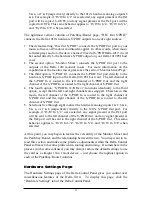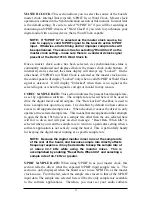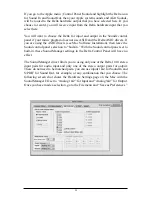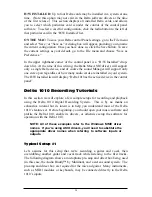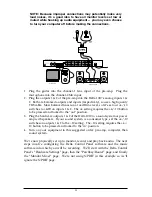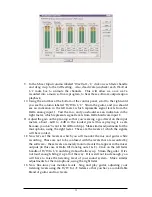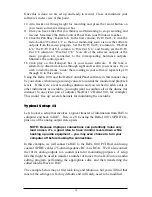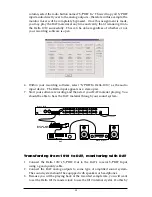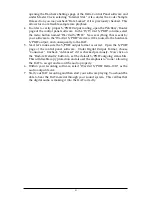
S/PDIF Page
The S/PDIF page of the Delta Control Panel configures the S/PDIF output format
and displays the status of the S/PDIF input. To display this page, click the
"S/PDIF" tab of the Delta Control Panel software.
DIGITAL INPUT: This group box displays the current S/PDIF input status.
The Delta 1010’s S/PDIF receiver is capable of recognizing a valid input signal
versus an invalid, corrupt or non-present one. When a valid signal is detected at
S/PDIF In, this group box displays "Valid Input Detected." When an invalid
signal is detected or no signal is present, the group box displays "Invalid or Not
Present." Below this message are two ‘grayed-out’ buttons: "Coax(RCA)" and
"Optical." These are functions of the Delta DiO 2496, another product in the M
Audio Delta line, one with both optical and coaxial S/PDIF inputs. These
controls do not apply to the Delta 1010.
DIGITAL OUTPUT FORMAT: Within the "Digital Output Format" group,
you choose the digital audio format of the S/PDIF output. The default setting,
"Consumer," is a true S/PDIF format and is recognized by all consumer devices.
The alternate "Professional" setting is an AES/EBU type data stream, but
electrically S/PDIF. This is a work-around that is recognized by some but not all
AES/EBU devices.
For both consumer and professional output formats, the "Advanced" checkbox
will allow you to force a few particular status bits in the outgoing S/PDIF signal.
The advanced option is for expert users only; however, if you decide to go
exploring, change a few bit settings and get lost, you can always select the
"Restore Defaults" button to restore the outgoing status bits to their factory
settings. When "Consumer" and "Advanced" are both selected, the group
"Consumer Format Advanced Settings" will appear. When "Professional" and
"Advanced" are both selected, the group "Professional Format Advanced
Settings" will appear. These groups are described below:
CONSUMER FORMAT ADVANCED SETTINGS (Copy Mode): Copy
protection, also known as Serial Copy Management System (SCMS), is written
into the S/PDIF subcode, a reserved part of the S/PDIF digital stream that is
independent of the actual audio data being transmitted. It can be used to inhibit
the amount of copies that can be made, or allow for unlimited copying. Three
SCMS modes are available. "Original (Copy Permitted)" indicates that the
source material may be copied by a receiving device. "1st Generation" indicates
that the source material is a first generation copy. Most devices that are capable
of recording will reject material with this SCMS mode set. The final option is
"No SCMS" which may be used to override the other two modes and allow a
recording device to successfully record the audio data. Different manufacturers’
products may interpret these codes differently and require you to set these bits by
"trial-and-error" until proper operation is achieved.
26
Summary of Contents for Delta 1010
Page 51: ...51 Notes...
Page 52: ...52 D1010 111700...











